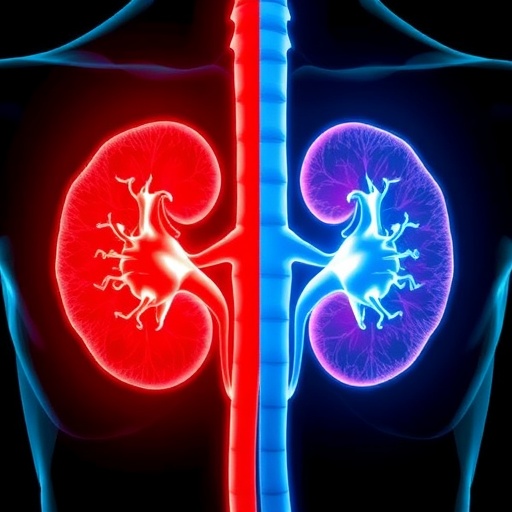In recent years, the increasing prevalence of non-communicable diseases (NCDs) in animals worldwide has become a growing concern for both veterinary and public health sectors. From companion animals such as dogs and cats to livestock and wildlife including dairy cows and sea turtles, chronic diseases like cancer, obesity, diabetes, and degenerative joint diseases are on the rise. This disturbing trend reflects not only the health of animals themselves but also signals potential implications for human health due to shared environmental and biological risk factors. Despite this apparent interconnectedness, research integrating these aspects remains sparse and fragmented, highlighting an urgent need for an interdisciplinary framework.
Addressing this gap, Antonia Mataragka, an animal scientist at the Agricultural University of Athens, has formulated a novel conceptual model aimed at enhancing the surveillance and management of chronic diseases in animals. Her research, published in the journal Risk Analysis, employs an evidence-based risk assessment approach that considers the multifactorial origin of NCDs, bridging the domains of veterinary science, ecology, and public health. This integrative model underscores the parallel rise of specific chronic diseases in both human and animal populations, emphasizing shared drivers and mechanisms that underlie their emergence.
Central to Mataragka’s findings is the role of genetic predisposition as a fundamental biological factor contributing to NCD susceptibility across different species. Animals selectively bred for aesthetic traits, such as many dog and cat breeds, present higher incidences of conditions like diabetes and mitral valve disease. Similarly, livestock genetically optimized for productivity—often through selective breeding and genetic modification—are more prone to chronic metabolic and cardiac diseases. These genetic influences interact complexly with external environmental and socio-ecological determinants, creating intricate pathways toward disease onset and progression.
Environmental factors emerge as principal contributors to the growing burden of animal NCDs, with nutritional imbalances, sedentary lifestyles, and chronic stress playing pivotal roles across species. For instance, the epidemic of obesity among domestic cats directly correlates with increasing rates of feline diabetes, as documented by recent veterinary epidemiological surveys. Concurrently, gastrointestinal cancers have been reported in marine species like beluga whales, demonstrating the reach of environmental carcinogens. Osteoarthritis prevalence in intensively farmed cows and pigs further exemplifies how management practices impact animal health, while farmed Atlantic salmon exhibit cardiomyopathy syndrome influenced by aquaculture conditions.
The magnitude of ecological transformation driven by human activity intensifies these health risks by altering habitats and distorting natural environmental balances. Urbanization, climate change, habitat fragmentation, and biodiversity loss collectively enhance exposure to toxicants and stressors that expedite chronic disease development. Marine ecosystems experience warming waters and coral reef degradation, correlating with elevated tumor rates among sea turtles and fish. On land, companion animals residing in cities face increased rates of obesity and diabetes attributable to urban heat islands and reduced physical activity, while pollution-related endocrine and immune disruptions afflict birds and mammals exposed to industrial emissions and chemical runoff.
Mataragka’s research highlights a critical deficiency in early diagnostic systems for animal NCDs, which hamstrings timely intervention and effective disease control. Unlike human health, where institutions such as the World Health Organization maintain extensive mortality and morbidity databases for chronic diseases, veterinary health monitoring systems remain rudimentary and disjointed. This lags in systematic surveillance limit our understanding of disease epidemiology and hinders the formulation of targeted prevention strategies. The need for comprehensive veterinary epidemiological infrastructure is evident if we aim to mitigate these emerging threats.
Her study systematically quantifies the prevalence rates of various NCDs across different animal populations, unveiling patterns indicative of a complex interaction between genetic and environmental drivers. The analysis delves deeply into mechanistic pathways linking risk factors and disease emergence, reinforcing the concept that these chronic conditions arise from multifactorial etiologies. The study outlines intervention strategies at multiple biological and ecological scales, ranging from individualized care to herd-level management, ecosystem preservation, and policy implementation designed to reduce exposure to identified risk factors.
At the core of this paradigm shift is Mataragka’s conceptual model, an innovative synthesis combining the principles of One Health and Ecohealth—two frameworks that recognize the interconnectedness of human, animal, and environmental health but often function independently. This integrative model elucidates how biological susceptibility, modulated by genetic predisposition, interacts synergistically with broader socio-ecological forces such as climate stressors, pollution, and land-use changes. It offers a holistic perspective necessary for addressing the complexity of chronic disease dynamics in diverse animal populations.
Anticipating the application of this model, Mataragka envisions an integrated surveillance system that concurrently monitors animal health, human health outcomes, and environmental parameters. By revealing shared etiologies and early warning signals of rising NCD risks, such a platform could enhance preparedness and response, lowering disease incidence and improving health outcomes across species. This proactive approach aligns with emerging global health priorities emphasizing the necessity of cross-sector collaboration and ecosystem-based disease management.
The urgency to establish such interdisciplinary frameworks is underscored by ongoing global challenges including climate change, habitat degradation, and expanding urban landscapes. These factors exacerbate the susceptibility of animals to chronic diseases and may accelerate disease spillover or shared disease burdens between animals and humans. Mataragka’s work calls for a paradigm shift in veterinary and ecological health sciences, advocating for policies and research agendas that emphasize interconnected health determinants rather than isolated disease entities.
Furthermore, the study stresses the importance of addressing modifiable environmental exposures within animal husbandry, wildlife conservation, and companion animal care. Strategies such as improving nutritional balance, reducing sedentary behavior, minimizing exposure to pollutants, and mitigating stress can substantially alleviate the progression of NCDs. Complementing these measures with ecosystem-level interventions aimed at preserving biodiversity and reducing anthropogenic environmental disruptions is essential for sustainable health management.
In conclusion, Antonia Mataragka’s research represents a pivotal advancement in understanding and managing chronic diseases in animals within the broader context of planetary health. By weaving together genetic, environmental, and socio-ecological threads into a cohesive risk assessment framework, her model offers a robust tool for scientists, veterinarians, policymakers, and conservationists alike. The synergy between One Health and Ecohealth approaches encapsulated in her work paves the way for more comprehensive and effective strategies to combat the rising tide of non-communicable diseases, safeguarding the health of animals, humans, and their shared environments.
Subject of Research: Non-communicable chronic diseases in animals and their connection to environmental and genetic risk factors.
Article Title: Interdisciplinary Risk Assessment Model Sheds New Light on Animal Chronic Disease Surveillance
News Publication Date: November 11, 2025
Web References:
Society for Risk Analysis
Keywords: Animal science, Veterinary medicine, Domesticated animals, Wildlife, Animal health, Non-communicable diseases, Chronic diseases, Genetic predisposition, Environmental exposures, One Health, Ecohealth, Disease surveillance
Tags: cancer prevalence in livestockchronic diseases in animalsdiabetes in companion animalsenvironmental risk factors for animalsevidence-based risk assessment in veterinary scienceimplications of animal health on human healthintegrative model for disease managementinterdisciplinary approach to animal healthnon-communicable diseases in petsrising obesity in dogs and catsshared health risks between humans and animalsveterinary public health concerns






